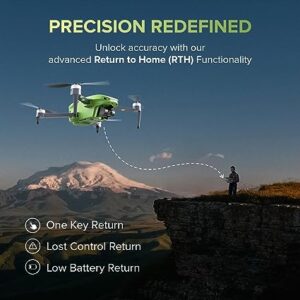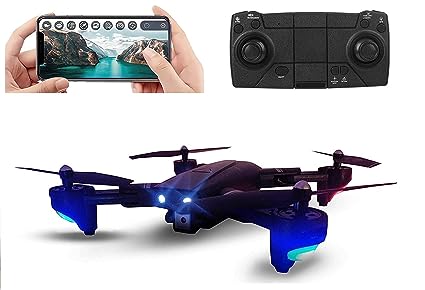Embarking on a Thrilling Drone Adventure: Unveiling the Marvels of UAV Technology
Greetings, everyone! Today’s topic takes us on an exciting journey into the world of drones. You might have heard of these intriguing devices, but you may not know all about their amazing capabilities. Don’t worry; I’m here to provide you with all the information you need to understand and appreciate the wonders of drones.
At their core, drones are flying robots – yes, robots that can actually fly! These incredible machines, also known as UAVs or unmanned air vehicles, have revolutionized aviation by soaring through the sky without any human pilot. Take a moment to let that sink in; it truly is an impressive feat of technology.
Now, let’s dive into the specifics. In this topic, we’ll explore not only how drones work but also uncover their wide range of uses, applications, and even their market value. You might wonder, what can a drone actually do? Well, the possibilities are endless! From capturing breathtaking aerial shots that leave you in awe to playing a crucial role in search and rescue missions, these versatile devices have brought groundbreaking advancements to various industries.
Whether you’re a photography enthusiast eager to capture stunning views from above or someone curious about the practical uses of drones, this video will leave you enlightened and inspired. So, join me as we unravel the mysteries surrounding drones and discover the countless opportunities they offer. Remember, the world of drones isn’t just limited to science fiction movies or internet videos – it’s a reality that continues to shape our future. So buckle up, because this topic will take you on an informative and thrilling exploration of the mesmerizing world of drones!
In this section, we will delve into the fascinating world of mechanical design aspects of drones and uncover the reasons behind their innovative designs.
The evolution of drone designs has been a remarkable journey. Initially, single propeller designs provided the necessary lift force but lacked control capabilities. To combat Newton’s third law of motion, the drone’s body rotated opposite to the propeller, proving to be a significant drawback.
But then came the era of two propeller designs, which offered the advantage of consuming less energy. However, these designs required higher control accuracy and stability for executing high-speed maneuvers. It was a delicate balance to achieve.
As technology progressed, three propeller designs emerged, but they posed complications with motor reaction torque and gyroscopic precision. Despite the challenges, these designs paved the way for further innovation.
Finally, we arrive at the pinnacle of drone design – the four propeller drones, or quadcopters. These marvels of engineering provide unparalleled stability, high speeds, and sharp turns. Thanks to different propeller speeds, quadcopters can effortlessly hover, move forward, roll, and yaw. It’s a mesmerizing display of aerodynamic mastery.
But it’s not just the physical design that makes drones so incredible. Inside these flying marvels, flight controllers act as intelligent pilots. These controllers empower operators to navigate through difficult situations with ease, using simple controls. It’s a testament to human ingenuity, where we have harnessed technology to overcome the most challenging obstacles.
So, next time you marvel at a drone hovering in the sky, remember the incredible thought process and engineering that went into its design. From single propellers to quadcopters, each design iteration has shaped the drone industry into what it is today. The future of drones is limitless, and it’s exciting to imagine the possibilities that lie ahead.
Section 1: Understanding Drones
Drones, also known as Unmanned Aerial Vehicles (UAV), have become essential tools in various fields such as filming, military surveillance, and recreational activities. They exist at the intersection of aerospace, robotics, and mechatronics, offering a diverse range of applications.
Section 2: Popular Drones for Recreational Use
In the realm of recreational drones, a key component is the frame, usually crafted from either plastic or carbon fiber. The frame’s design allows for different arm variations, accommodating various needs. At the end of each arm, you’ll find motors and propellers, while the central section houses essential electronic gear like flight controllers, gimbals, and cameras. Achieving optimal flight characteristics relies on careful weight distribution, making carbon fiber frames the preferred choice due to their strength and lightness.
Section 3: Motor Selection and Propellers
Selecting the appropriate motors is vital, with considerations revolving around the required power and desired performance characteristics. Slower-spinning motors with higher torque are ideal for heavy payloads and stable flight, while faster-spinning rotor systems provide increased maneuverability. Propellers, serving as the drone’s wings, can be made from plastic or carbon fiber. The latter offers durability but comes with a higher cost. Propeller size should align with the drone’s intended purpose, with smaller ones suitable for aggressive builds and larger ones for higher payload and longer flight time.

Section 4: Power Source: Batteries
A drone’s power is sourced from batteries, which come in various weight and capacity options. It’s essential to strike a balance between battery capacity and weight since increased capacity can lead to diminishing returns. Eventually, additional capacity might not translate to significant benefits.
Section 5: Electronic Speed Controller (ESC)
Controlling the speed of drone motors is the electronic speed controller (ESC). This component allows for varied motor speeds, enabling diverse flight maneuvers and hovering capabilities.
Section 6: Transmitter, Receiver, and Flight Controller
The drone’s communication system relies on a transmitter and receiver. The transmitter sends signals to the drone, while the receiver receives and relays them to the flight controller. The flight controller processes user inputs through algorithms and codes, ensuring smooth and controlled movement.
Section 7: Propeller Size Selection
Selecting the right propeller size is crucial for achieving optimal drone performance. Smaller propellers suit aggressive builds, while larger ones are better suited for handling higher payload capacities and extended flight times.
By understanding these fundamental aspects of drones, one can explore the vast possibilities these unmanned aerial vehicles offer across industries and recreational activities.
Below are the some of the Drones Which can purchased from Amazon.
1) Ziria Foldable Toy Drone with HQ WiFi Camera Remote Control for Kids Bounce Mode, App One Key Headless Quadcopter with Gesture Selfie, Flips Mode functionality (Black Colour)
2.) IZI Sky 4K 20MP CMOS 1/3.06 Camera Drone, 3 Axis Gimbal 5KM Transmission, Cinematic Vertical shooting, Precision Hovering, 10+ Flying Modes, GPS, Return to Home, 2X Batteries (70 Mins Flight)





